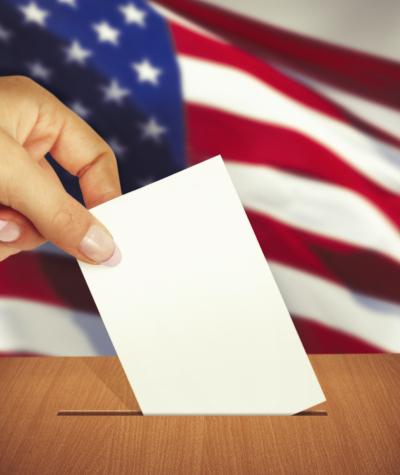Over the past few years, there has been some concern about the transparency of the counting process in American elections, especially where votes are cast and counted electronically. For instance, last spring in Waukesha County during the Wisconsin Supreme Court run-off, a last minute correction to a clerical error changed the results of the election. In March of this year, an electronic voting system mistakenly recorded two losing city council candidates in Palm Beach County, Florida as receiving the most votes.
On May 3rd the people of Greater London went to the polls to elect a new mayor and local assembly. Voters marked their votes on paper ballots. At 8 am the next morning, poll workers began counting the votes electronically at three different locations across Greater London. The process used to count ballots allowed for a high degree of transparency in the count.
The votes from five of the fourteen assembly constituencies were counted at the Olympia Center in Kensington. At one end of the hall stood the sealed black ballot boxes from each constituency. Poll workers opened the boxes one at a time. Each box contained a Ballot Paper Account stating the number of ballot papers in the ballot box when polls closed the night before. Poll workers then completed a Batch Control Sheet. Poll workers then took the Batch Control Sheet with the ballots in that batch to a computer for registration. The Batch Control Sheet stays with the batch for the whole counting process and contains the counting history of the batch.
Soon after registration, ballots in each batch are scanned with the Batch Control Sheet. The machine counts ballots on which the voter’s intent is clear. Those ballots for which the machine cannot record a vote are scanned again. A bar code on the top of each ballot ensures that each ballot can only be counted once, no matter how many times the ballot is scanned.
Any ballots that the machines cannot count are placed in a folder with the batch. Poll workers then verify that the number of ballots that the machines could not record in the batch is the same as the number of votes in the folder. Any ballot papers in the folder are then entered manually. Images of these ballot papers appear on a screen for candidates, candidates’ agents, and observers to see. Where the voter’s intention is clear from the marks on the ballot paper, the vote is recorded. Where the voter’s intention is unclear or the ballot is invalid for another reason, the vote is not counted and poll workers record the reason why the vote could not be counted. Any candidate, agent, or observer can object to the actions of the poll worker manually entering unscannable ballots. The chief returning officer makes final decisions about whether or not to count a ballot when necessary.
Finally, when all ballots are counted, the returning officer makes a public declaration of the results with all candidates on stage. At this point, the results are final. No need for canvassing in the days and weeks after the election to determine a winner in close races. The constituencies at the Olympia took about ten hours to count 150,000 ballots for the offices of mayor, assembly constituency member, and assembly at large.
American jurisdictions may not be able to implement London’s counting process completely. However, the lesson here is that it is possible to count hundreds of thousands of ballots quickly using a transparent process with a paper trail. Compared to the UK, the counting process of American elections is opaque. In most jurisdictions in the United States, the public cannot see what happens to their votes after the polls close. The counting process for American elections can be, and must be, more transparent.
Jason George, Harvard Law School, JD 2012, is a former CLC Legal Intern
